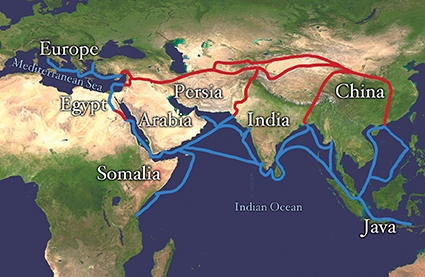On the Road to the Black Sea: China in Central Asia
Op-Ed
Last week I wrote on China and its interests in the South Caucasus. Beijing’s ambitions in the region have been driven by its Road and Belt initiative which spans tens of states to directly link west China with the European market. The road to the South Caucasus, however, is not an easy one and runs through the no less strategically important Central Asian region.
China has made significant progress in increasing its economic and political leverage in Central Asia over the past decade. Central Asia, with more than 65 million in population, is essentially a landlocked region consisting of Kazakhstan, Kyrgyzstan, Uzbekistan, Tajikistan and Uzbekistan. From the Chinese perspective, these five countries, along with Mongolia, represent those two major transit routes which will make a large part of Beijing’s One Belt One Road initiative operational.
China's economic plans in Central Asia include numerous spheres but most notably involve a range of industrial zones alongside the construction of railways, pipelines, etc. Connectivity, the lack of which the region has been notorious for historically, is the cornerstone of Beijing’s actions. China already constructed a 3,666-kilometer pipeline from Turkmenistan. This, in turn, made Turkmenistan dependent on the Chinese market, as Ashgabat currently has no other exporters and the price for Turkmen gas is nearly $165 per 1000 cubic meters (actually one of the lowest prices).
As said, Central Asia is now the location of the major Belt routes, most of which run through Kazakhstan: the ‘China-Central Asia-West Asia Corridor,’ the ‘Eurasian Land Bridge’, and the ‘Khorgos-Aktau Railway’. These routes are a powerful alternative to sea trade routes, with railway alone able to significantly reduce transit times. As a further sign of the importance of the railway, China plans to restart talks with Uzbekistan to start work on a 270-km-long line which will link China and Uzbekistan via Kyrgyzstan.
After becoming a major trade partner and investment source, the Chinese are now more and more positioning themselves as major constructors of large infrastructure projects in Central Asia. Mutual state visits often occur, and Central Asian countries are beginning to cooperate more with China on security and military issues.
Cooperation with Russia
Russia officially endorsed the Eurasian Economic Union-Belt initiative in May 2015. However, Beijing's growing economic and security involvement in Central Asia may endanger the Kremlin’s efforts to keep its influence in the region. Central Asia currently serves as a playground for Russian and Chinese interests and how the two powers can cooperate with each other to confront common threats amid allegedly rising Central Asian militancy is under question.
From the Russian perspective, cooperation with China in the economic realm in Central Asia serves Russian interests as investments from Belt and Road could alleviate the region’s low economic development and mitigate security problems. However, Russia is also worried that as China reaches economic success in Central Asia, the more likely it is that Beijing will get more involved security-wise to protect its vital infrastructure. Indeed, China has reasons to be concerned as Xinjiang remains a problem and Central Asian fighters are returning home from the Middle East. There were already signs of deeper problems when in August 2016 a Uighur national attacked the Chinese Embassy in Bishkek, Kyrgyzstan.
Moscow should also be concerned as there were reports in 2016 that the Chinese were building up to 10 defense infrastructure constructions on the Tajik-Afghan border. Beijing has also increased its security cooperation with Kyrgyzstan through joint border control exercises and has even held joint military trainings with the Tajik army.
That said, despite losing its primary economic position in Central Asia, Russia still retains a strong military position as it is the only foreign power which has military bases in the region.
The Central Asian region is an important space for Beijing in its Belt and Road initiative. And before solidifying its influence in the South Caucasus, Beijing will work further to expand its assets in Kazakhstan, Uzbekistan and other countries. Although conflict between Russia and China is unlikely to take place, tensions could at times rise. Meanwhile, Russia will be trying to further strengthen its military position through exercises or even talks to open new military bases. China, on the other hand, will try to improve Central Asia's connectivity problems through large infrastructure projects.
Emil Avdaliani












